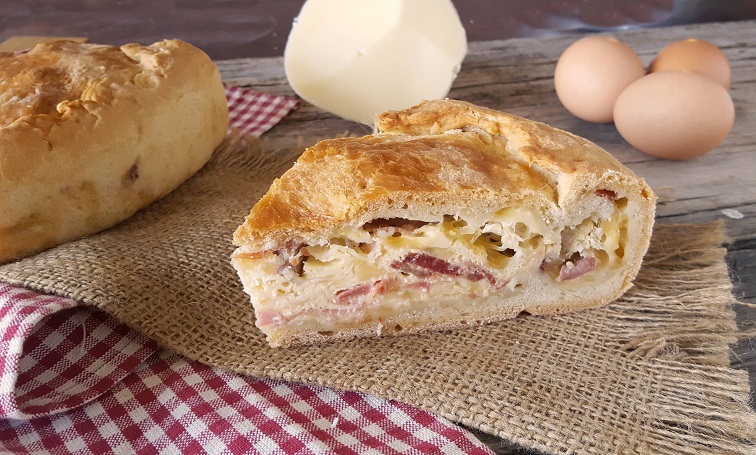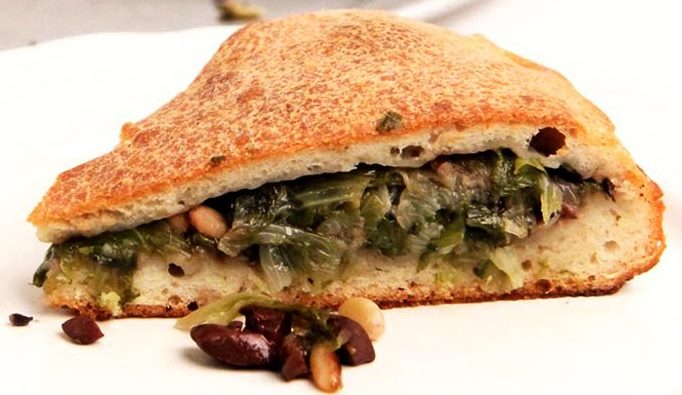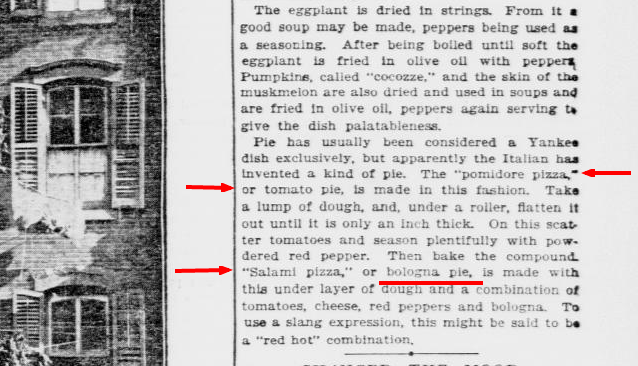
Be ready to have your mind blown: in Naples, the word “pizza” doesn’t always mean the same kind of food.
Wait, wait, wait: I had so much fun in hearing the sound of your brain exploding, that I want to do that again.
In Italy, the word “pizza” was not even popular outside Naples before the Forties.
Yes, the food that started to spread in the US already at the beginning of the XX century, was almost unknown in the rest of Italy until the end of the Second World War.
I might have heard your mind be totally devastated for the third time. Alright, I’ll quit torturing you, and I’ll tell you the whole story.
Let’s start from the beginning: what did I mean when I said that in Naples we don’t always use the word “pizza” to talk about the same food?
Although “pizza” is a word universally associated with a leavened flatbread, usually of a round shape, and topped with several ingredients, in Naples we also use it to refer to other bakery products.
Generally speaking, a pizza can be a salty cake filled with different ingredients. Some of those cakes are particularly popular:
- pizza di scarole: it’s a cake filled with escarole, olives, capers, pine nuts, and raisins. It is especially associated with the Christmas holiday season, as it is a comfort food eaten for lunch on Christmas Eve or New Year’s Eve: the reason is that on that day families are busy with preparing the big family dinner (cenone), they don’t have time to focus on lunch and pizza di scarole is a quick way to fill their stomach;

- pizza ripiena sasiccia e friarielli: not to be confused with pizza con salsiccia e friarielli, which is the classic pizza with fiordilatte cheese topped by sausages and broccoli rabes; pizza sasiccia e friarielli is another cake filled with those ingredients (provola can be added too);

- pizza ricotta e spinaci: the cake is made with puff pastry and is filled with ricotta cheese and spinach. Compared to the previous two, it’s taller and it’s open on top, so you see the whole filling. It looks pretty similar to the Chicago Deep Dish, but with different ingredients. But there are also closed versions made with the bread dough or with the shortcrust pastry.

- pizza chiena: this cake is made with shortcrust pastry. It’s filled with ricotta cheese, eggs, and various salami. It’s one of the typical foods of the Campania region eaten during the Easter weekend (see the opening picture).
It is weird to see the word pizza associated with a cake, something that is right the opposite of a round flatbread, right? But that’s exactly the word used until not so long ago by Italian travelers that had been to Naples, to try and describe the product to the rest of the country.
For example, in the Gastronomic Guide of Italy, issued by Touring Club in 1931, we read:
“[pizza] consists essentially of a large round cake, half a centimeter thick, made with leavened bread dough […] topped by several ingredients”.
Pizza was nothing unseen at the time, but it was still a Neapolitan specialty, and not yet widespread in Italy. The rapid development of pizzerias throughout the country happened after the Second World War. At the same time, the same thing happened in the United States, supposedly (but debated) thanks to the Allied soldiers that had been to Naples and tasted the product, bringing with them the recipe back to their motherland.
But we know that pizza was nothing new even in the US, and it was already a thing since the beginning of the 1900s. Immigrants from Naples had started to reproduce their traditional food, replacing wood with coal inside the oven, and working with the ingredients they found there.
Pizza became quite popular especially in New York, the major harbor that welcomed all the immigrant people, and a new home for a lot of Neapolitan pizzaioli. They marketed it there with the name pomidoro pizza, but many Americans used to call it “tomato pie” and, later, pizza pie. Look at this article from the New York Tribune, dating back to 1903, that states that “Italians have invented a kind of pie”.

Today the word “pie”, which in the US is used to refer to a pastry dough casing filled with sweet or savory ingredients, is still used in New York to call a whole pizza, compared to a slice. The same expression can be heard in many American songs, like Dean Martin’s That’s Amore or The Gaylord’s Pazzo for pizza.
It seems then that the tendency to associate pizza with a cake is sort of innate in the human mind.
But it’s not that easy. Because in Naples we use the word pizza also to refer to two other different foods.
One is pizza parigina: it’s square focaccia filled with tomato, prosciutto, provola cheese and topped by a thin layer of puff pastry.
The other one is the famous pizza fritta: the pizza dough is filled with ricotta cheese and pork rinds, closed like a calzone, and then deep-fried. This is another Neapolitan specialty that is growing in popularity worldwide and has an interesting history behind it (which will see in another article).
And I tell you more: the word pizza is also used for other bakery regional products in the rest of Italy, like pizza alla pisana or pizza scima abruzzese. But I’ll get back on it in the future.
Would you have ever believed that such a simple word could disclose so many meanings?
Bonus: in Roman slang, the word pizza also means a hard slap in the face. Is it probably because Neapolitan pizzaioli slap their dough? Not in Rome, though: they use a mattarello (rolling pin). This adds even more mystery to the usage of the word…

2 comments
This article just blew up my brain ??
Call Mr Wolf! ??